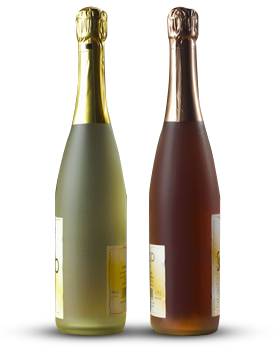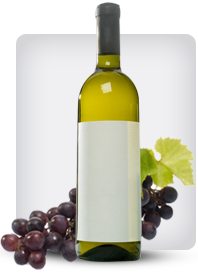

Tag: Difference
Difference Between Sonoma Valley and Dry Creek Valley Zinfandel
Posted onZinfandel, often called “America’s Heritage Grape,” thrives in California, particularly in Sonoma County. Two of its most renowned sub-regions—Sonoma Valley and Dry Creek Valley—produce distinct expressions of the varietal. While both regions share a passion for Zinfandel, differences in climate, soil, and winemaking traditions create unique profiles that appeal to different palates.
Climate and Terroir
Sonoma Valley Zinfandel
Sonoma Valley, nestled between the Mayacamas and Sonoma Mountain ranges, experiences a moderate, maritime-influenced climate. Morning fog and cool breezes from the Pacific Ocean slow ripening, allowing for balanced acidity and nuanced flavors. The valley’s diverse soils—including volcanic, clay, and loam—contribute to structured, elegant wines.
Dry Creek Valley Zinfandel
Dry Creek Valley, located further north, is warmer and drier, with less fog intrusion. The region’s well-drained, gravelly soils and ample sunshine produce riper, more robust Zinfandels. The resulting wines are often bolder, with higher alcohol levels and intense fruit concentration.
Flavor Profile
Sonoma Valley Zinfandel
Sonoma Valley Zins tend to be more restrained and food-friendly, with:
- Red fruit dominance (raspberry, cherry)
- Earthy, herbal undertones
- Medium body with firm tannins
- Bright acidity
Dry Creek Valley Zinfandel
Dry Creek Zinfandels are known for their opulent, fruit-forward character, featuring:
- Blackberry, plum, and jammy notes
- Spice (black pepper, clove)
- Full-bodied, velvety texture
- Higher alcohol warmth
Winemaking Styles
Sonoma Valley winemakers often emphasize balance and terroir expression, using restrained oak and moderate extraction. In contrast, Dry Creek producers frequently embrace boldness, with extended maceration and new oak barrels enhancing richness.
Conclusion
While both regions excel in Zinfandel production, Sonoma Valley offers refined, complex wines suited for pairing with grilled meats and Mediterranean cuisine. Dry Creek Valley delivers powerful, fruit-driven Zins that stand alone or complement hearty dishes like barbecue. The choice depends on personal preference—whether you favor elegance or intensity.
Difference Between Left Bank and Right Bank Merlot
Posted onMerlot is one of the most widely recognized red wine grapes, celebrated for its smooth, velvety texture and approachable fruit flavors. However, not all Merlot is the same—especially when comparing wines from Bordeaux’s Left Bank and Right Bank. While both regions produce exceptional Merlot-based wines, they differ significantly in terroir, blending styles, and flavor profiles.
Left Bank Merlot: A Supporting Role
The Left Bank of Bordeaux, home to prestigious appellations like Médoc and Graves, is best known for Cabernet Sauvignon-dominant blends. Here, Merlot plays a secondary role, often used to soften Cabernet’s tannins and add plush fruit notes. Left Bank Merlot tends to be more structured, with higher acidity and firmer tannins due to the gravelly, well-drained soils.
- Soil: Gravel, sand, and limestone
- Blending Style: Typically blended with Cabernet Sauvignon and Cabernet Franc
- Flavor Profile: Dark berries, cassis, tobacco, and earthy notes
Right Bank Merlot: The Star of the Show
On the Right Bank, in regions like Saint-Émilion and Pomerol, Merlot takes center stage. The clay-rich soils retain moisture, allowing Merlot to ripen fully, resulting in richer, more opulent wines. Right Bank Merlot is often blended with Cabernet Franc, which adds aromatic complexity without overpowering Merlot’s lush character.
- Soil: Clay and limestone
- Blending Style: Dominated by Merlot, sometimes with Cabernet Franc or Malbec
- Flavor Profile: Plum, black cherry, chocolate, and velvety tannins
Key Differences at a Glance
| Aspect | Left Bank Merlot | Right Bank Merlot |
|---|---|---|
| Primary Role | Supporting grape in blends | Main grape in blends |
| Soil Type | Gravel, sand | Clay, limestone |
| Flavor Profile | More structured, earthy | Softer, fruit-forward |
| Famous Regions | Médoc, Graves | Saint-Émilion, Pomerol |
Which One Should You Choose?
If you prefer bold, structured wines with firm tannins, Left Bank Merlot blends (such as those from Pauillac or Margaux) may appeal to you. However, if you enjoy supple, fruit-driven wines with a silky texture, seek out Right Bank Merlot-dominant bottles from Pomerol or Saint-Émilion.
Ultimately, both styles showcase Merlot’s versatility, proving that terroir and winemaking traditions shape this beloved grape in fascinating ways.
popular posts
-

Aging Potential of Premium Pinot Noir: Unlocking the Elegance of Time Among the world’s noble grape varieties, Pinot Noir holds a unique and almost mythical status
12-30 2025Celebrated for its ethereal aromatics, silky texture, and captivating expression of *terroir*, it is often considered the most transparent conduit from vineyard to glass. Read More
-

Food Pairing with Full-Bodied Cabernet Sauvignon Few wines command a table with the authority of a full-bodied Cabernet Sauvignon
12-29 2025With its deep, inky color and powerful structure built on robust tannins, dark fruit flavors, and often a hint of oak, it’s a wine Read More

